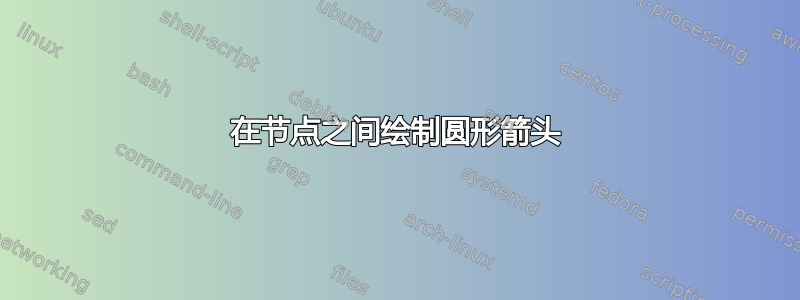
我想要画这样的东西:

到目前为止我有这个乳胶:
\documentclass[border=5mm]{standalone}
\usepackage{tikz}
\usetikzlibrary{arrows}
\begin{document}
\begin{tikzpicture}
\node (species_1) at (-3,0.5)
{$S_1$};
\node (species_2) at (0,0)
{$S_2$};
\node (species_3) at (2,-2)
{$S_3$};
\node (species_4) at (0,-4)
{$S_4$};
\node (species_5) at (-2,-2)
{$S_5$};
\node (species_6) at (-3,-4.5)
{$S_6$};
\node(equation_1) at (6,-1)
{$S_1 + S_5 \rightarrow S_2 $};
\node(equation_2) at (6,-2)
{$S_2 + S_3 \rightarrow S_4 $};
\node(equation_3) at (6,-3)
{$S_4 + S_5 \rightarrow S_6 $};
\end{tikzpicture}
\end{document}
由此产生了如下结果:

我尝试过几次,但似乎无法让箭头变成圆形。它们最终都是方形的,更不用说分叉箭头了。
我该怎么做呢?
谢谢
答案1
那个怎么样:
\documentclass[border=5mm]{standalone}
\usepackage{tikz}
\usetikzlibrary{arrows}
\begin{document}
\begin{tikzpicture}[paths/.style={->, thick, >=stealth'}]
\node (species_1) at (-3,0.5)
{$S_1$};
\node (species_2) at (0,0)
{$S_2$};
\node (species_3) at (2,-2)
{$S_3$};
\node (species_4) at (0,-4)
{$S_4$};
\node (species_5) at (-2,-2)
{$S_5$};
\node (species_6) at (-3,-4.5)
{$S_6$};
\node(equation_1) at (6,-1)
{$S_1 + S_5 \rightarrow S_2 $};
\node(equation_2) at (6,-2)
{$S_2 + S_3 \rightarrow S_4 $};
\node(equation_3) at (6,-3)
{$S_4 + S_5 \rightarrow S_6 $};
\draw [paths] (species_2) to [bend left=40] node {} (species_3);
\draw [paths] (species_3) to [bend left=40] node {} (species_4);
\draw [paths] (species_4) to [bend left=40] node {} (species_5);
\draw [paths] (species_5) to [bend left=40] node {} (species_2);
\draw [paths] (species_1) to [bend left=-12] node {} (species_2);
\draw [paths] (species_4) to [bend left=-12] node {} (species_6);
\end{tikzpicture}
\end{document}

所以正如您所看到的,主要思想是使用[bend left=XX]选项将箭头弯曲到您想要的方向。
答案2
为了保证箭头呈圆形,我借用了一些代码Heiko Oberdiek 的回答到 在 tikz 中绘制带路径的节点。

代码:
\documentclass{article}
\usepackage{tikz}
\usetikzlibrary{bending,positioning}
\begin{document}
% code from Heiko Oberdiek
% https://tex.stackexchange.com/a/250270/3954
\begin{tikzpicture}[
->,
thick,
main node/.style={},
]
\newcommand*{\MainNum}{4}
\newcommand*{\MainRadius}{1.5cm}
\newcommand*{\MainStartAngle}{90}
% Print main nodes, node names: p1, p2, ...
\path
(0, 0) coordinate (M)
\foreach \t [count=\i] in {2,...,5} {
+({\i-1)*360/\MainNum + \MainStartAngle}:\MainRadius)
node[main node, align=center] (species_\i) {$S_\t$}
}
;
% Calculate the angle between the equal sides of the triangle
% with side length \MainRadius, \MainRadius and radius of circle node
% Result is stored in \p1-angle, \p2-angle, ...
\foreach \i in {1, ..., \MainNum} {
\pgfextracty{\dimen0 }{\pgfpointanchor{species_\i}{north}}
\pgfextracty{\dimen2 }{\pgfpointanchor{species_\i}{center}}
\dimen0=\dimexpr\dimen2 - \dimen0\relax
\ifdim\dimen0<0pt \dimen0 = -\dimen0 \fi
\pgfmathparse{2*asin(\the\dimen0/\MainRadius/2)}
\global\expandafter\let\csname p\i-angle\endcsname\pgfmathresult
}
% Draw the arrow arcs
\foreach \i [evaluate=\i as \nexti using {int(mod(\i, \MainNum)+1}]
in {1, ..., \MainNum} {
\pgfmathsetmacro\StartAngle{
(\i-1)*360/\MainNum + \MainStartAngle
+ \csname p\i-angle\endcsname
}
\pgfmathsetmacro\EndAngle{
(\nexti-1)*360/\MainNum + \MainStartAngle
- \csname p\nexti-angle\endcsname
}
\ifdim\EndAngle pt < \StartAngle pt
\pgfmathsetmacro\EndAngle{\EndAngle + 360}
\fi
\draw[<-]
(M) ++(\StartAngle:\MainRadius)
arc[start angle=\StartAngle, end angle=\EndAngle, radius=\MainRadius]
;
}
\node[above left=1.4cm and 10pt of species_2] (species_0)
{$S_1$};
\node[below left=1.4cm and 10pt of species_2] (species_5)
{$S_6$};
\node[right=2cm of species_4](equation_2)
{$S_2 + S_3 \rightarrow S_4 $};
\node[above=10pt of equation_2] (equation_1)
{$S_1 + S_5 \rightarrow S_2 $};
\node[below=10pt of equation_2] (equation_3)
{$S_4 + S_5 \rightarrow S_6 $};
\draw[->]
(species_0) to[out=-20,in=180] (species_1);
\draw[<-]
(species_5) to[out=20,in=180] (species_3);
\end{tikzpicture}
\end{document}


